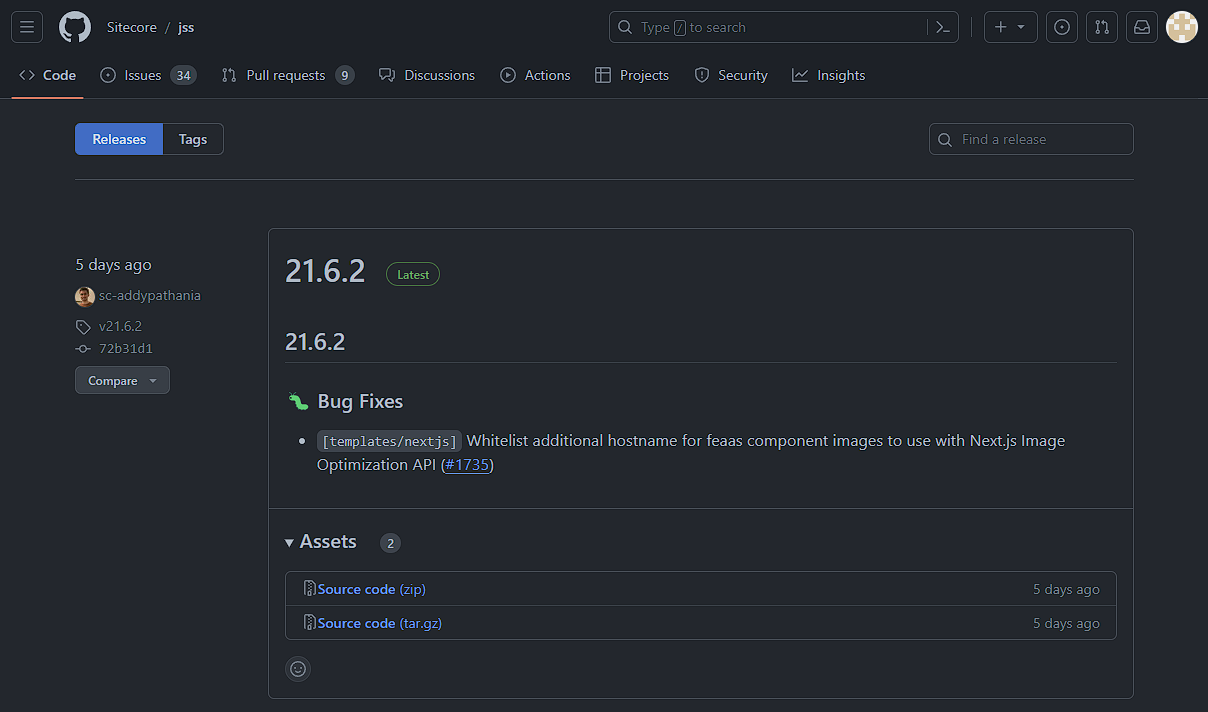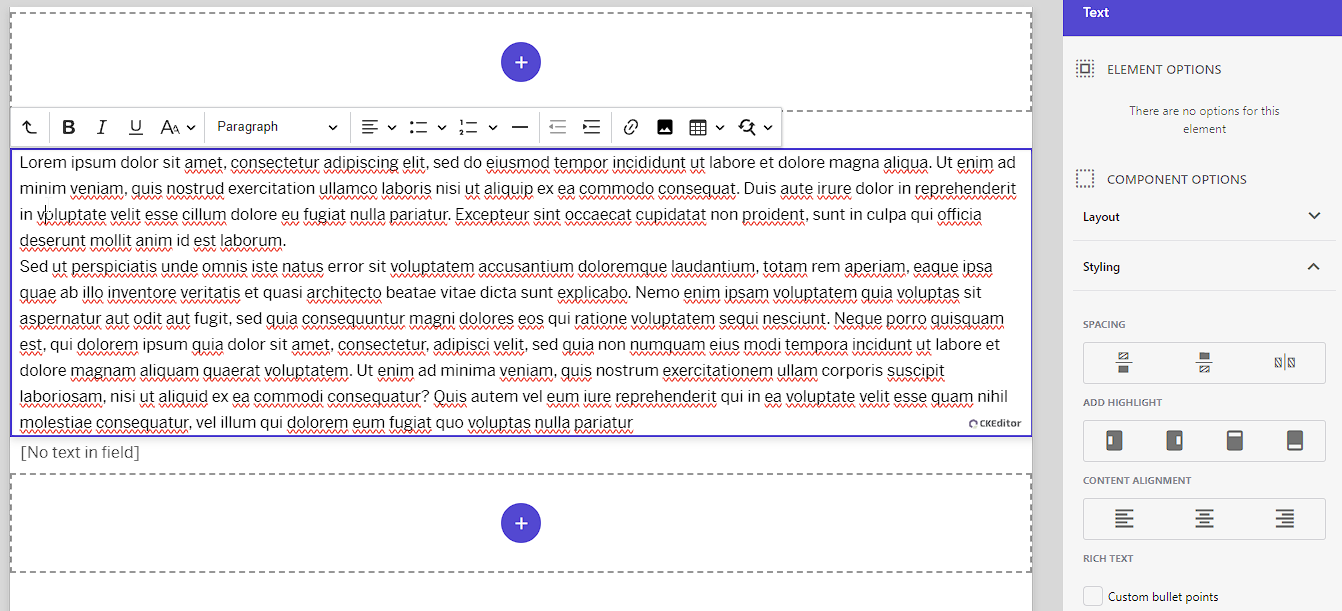Five Reasons Why Sitecore XM Cloud Will Have A Banner Year in 2024
And five things holding it back
Start typing to search...
The thing I’ve learned working in IT for over 25 years and working with Sitecore for 8 of those, innovation and evolution come hand in hand with feedback and knowledge sharing. So with that, let’s cover why I feel that Sitecore is going to have a banner year in 2024 and what’s holding it back and how we as developers can do our part.
First, it’s only February and if you are a subscriber to the changelogs of XM Cloud, Sitecore JSS, and Sitecore’s many other technologies, you can see things are happening.
The market for digital experience platforms (DXPs) is growing quickly, and companies are continuously looking for more effective, potent, and intuitive tools to handle their online presence. Constant innovation makes it possible for Sitecore XM Cloud to adjust to these shifting consumer demands.
Sitecore XM Cloud Forms only recently became available, yet as we’ve seen, it’s already evolving providing additional capabilities like custom validation messages.
Platforms such as XM Cloud must constantly integrate new technologies in order to keep up with the rapid pace of technological advancement. This entails implementing AI and machine learning capabilities, upgrading cloud infrastructure, and utilizing the newest web development frameworks. The Sitecore JSS GitHub releases demonstrate how Sitecore stays up to date with new JavaScript framework releases, guaranteeing that developers may utilize contemporary tools and techniques.

Continuous updates are essential for maintaining the highest security standards and ensuring compliance with global data protection regulations. Regular feature releases include security enhancements and patches that protect against emerging threats, making the platform more robust and trustworthy. While these releases in XM Cloud may at times fall in line with, oh, say the launch of a website or new feature for a client — it happens, they take away from requiring internal IT support from handling the issues in a timely manner.
Enhanced handling of multilingual sites and the inclusion of new settings to better handle language fallbacks and site resolution in a multilingual context. With these improvements, XM Cloud becomes a more alluring choice for multinational companies wishing to effectively manage numerous websites in various languages and locations.
As mentioned in the XM Cloud Changelog, Sitecore's dedication to integrate with contemporary development workflows and technologies is demonstrated by the integration of Azure DevOps and the availability of developer options in the Deploy app.

Developers and teams utilizing these platforms may now use XM Cloud more easily, which facilitates continuous integration and deployment (CI/CD) and streamlines development processes.
Sitecore JSS's GitHub releases show that the most recent frameworks and technologies are still supported and updated. React, Angular, and Vue are just a few of the popular frameworks that Sitecore XM Cloud keeps up to date, so it's in a good position to draw in and keep developers who want to employ the newest technologies for their work.
Features like the new Rich Text Editor and upgraded forms and components also help to increase site performance and visitor engagement. XM Cloud is positioned to assist companies in providing high-caliber, high-performing websites and digital experiences by giving equal weight to the developer and end-user experiences.
To make the most out of every feature in XM Cloud, developers need to have access to thorough and current documentation. Better documentation that includes more use cases, examples, and best practices may make it easier for both seasoned developers and novices to apply and take use of XM Cloud's features. Increasing the availability of tutorials, video instructions, and community forums as learning tools could also help to strengthen the developer community.
I don’t think it’s entirely on Sitecore to handle this. We as a community can leverage our knowledge and experience, taking what we’ve built over a decade or more. Sharing this knowledge through channels like corporate blogs, Sitecore’s numerous Slack channels provide a great resource for even folks like myself to become more knowledgeable and a greater asset to our clients.
Sure, we got a new Rich Text editor in Pages. Don’t get me wrong, I can’t remember the last time this happened. Just check it out. We went from this:

And now we’ve got this!

However, there are a bunch of other fields that ABSOLUTELY need improved support in Pages. I’m looking at you:
Multilist, Treelist, etc..
For clients wanting to migrate existing XP PaaS or IaaS sites over to XM Cloud, or even build net new ones taking
advantage of features like Pages, but also want a consistent user experience; not having support for these features
directly in Pages unlike WebEdit support in Experience Editor put it at a disadvantage.
As a result, additional development and training is required either to retrofit an existing experience for content
authors. For example, migrating a Multilist field into a Placeholder with draggable components. The
Multilist is one of the most highly used field types and the ability to use it in XM Cloud, in my
opinion, support of which is absolutely crucial for success of the platform. It needs to be a priority.
It is essential to add additional third-party services and apps to the integration ecosystem. Even though XM Cloud allows for connectors, adding more CRM, e-commerce, and digital marketing systems to this ecosystem might provide customers access to a more robust and seamless toolkit. Businesses would be able to integrate and manage their digital experience platforms with other vital business systems more easily as a result.
Whether its through Sitecore Connect or through custom fields like ones we’ve previously built connecting to Chat GPT, we, as developers need to bring about the kinds of integrations that enhance the capabilities of our clients.
Digital platforms for businesses need to be scalable as they grow. It is essential to continuously enhance caching techniques, infrastructure scalability, and performance optimization. massive-scale businesses and high-traffic scenarios will require XM Cloud to be able to manage massive traffic levels and complicated site layouts without sacrificing performance.
There are, and have been times when navigating XM Cloud has felt sluggish. Other times it’s like a kid on sugar. Maintaining consistent experiences is vital.
On XM Cloud, developers may create more intricate and customized solutions by having access to improved development tools and advanced customization assistance. Better support for unique development workflows, sophisticated debugging tools, and more adaptable APIs for extensive integration and customization are a few examples of this. Allowing developers to exceed the limits of what may be constructed on XM Cloud will accommodate a greater variety of projects and technological specifications.
There have been advances thanks to the likes of Webhook support in workflows and for replacing complex .Net pipeline processors, but what’s lacking is sufficient examples. We as developers should look to building and demonstrating these to increase their adoption.
Ultimately, Sitecore is on an amazing trajectory and I think if you’re already on XM Cloud you’ve just got a taste of some amazing features yet to come. If you or your clients haven’t yet tasted the cloud, fear not, plenty of time. Certainly Sitecore XP will continue to evolve but I think if you want to see the future, it’s in XM Cloud.